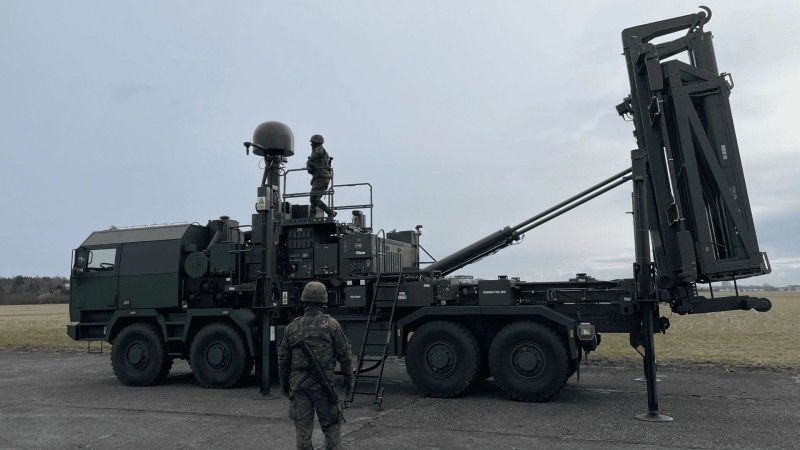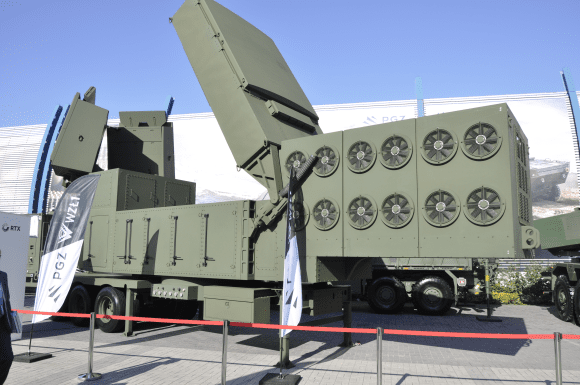Armed Forces
Poland to Get State of the Art Air Defence System Soon. IBCS Agreement Signed

The conclusion of the Agreement regarding the IBCS system for the Polish Armed Forces constitutes a key milestone of the process aimed at establishing the Polish IAMD network. Many areas of that Integrated Air Missile Defence solution would be the most modern in Europe. However, it still would take a couple of years for the capabilities to arrive.
According to declarations made by the Polish Ministry of Defence, Poland would pay the US Government around USD 2.53 bn. net for the IBCS system elements for the Narew and Wisła systems. That amount would be used to procure selected communication assets for Wisła and Narew. This includes 29 batteries (58 fire units) in total, including 3-4 launchers and a fire control system each, alongside the support and communications equipment.
The agreement also includes a passive IFF system, cryptography hardware, expansion of the laboratory infrastructure, integration of Polish radars for Wisła and Narew within the IBCS, along with Narew (CAMM-ER) launchers, as well as execution of the post-integration field test programme, involving interoperability tests between all elements of the Wisła and Narew systems.
Practical Side of IBCS?
What does the above mean, in practical terms? Poland is procuring a system, thanks to which the Narew SHORAD system (CAMM-ER missiles, 40 km range), and Wisła MRAD system can work together, within a single command network. The agreements regarding the procurement of launchers, PAC-3 MSE missiles, and Patriot radars, involving the US Government, and the one concerning the license-manufacturing of CAMM-ER launchers and missiles, signed last year, have a total estimated value of more than PLN 100 bn.

Photo. M.Mitkow/Defence24.pl
The above confirms that IBCS, developed and manufactured by Northrop Grumman, is responsible for just a fraction of the total IAMD system cost. When the Wisła Phase I procurement was happening back in 2018, with a price tag of USD 4.75 bn. dollars, some accusations against the Polish Ministry of Defence and the Armament Inspectorate were made, suggesting that the contract is overpriced. The procurement was compared to seemingly similar Swedish and Romanian acquisitions of the Patriot system, but with a less potent configuration, and excluding the offset agreements. It quickly turned out that the cost is kept under control, while capabilities (industrial capabilities included) involved in Phase I would turn out to be useful during the second stage.
Noteworthy, elements procured from the Polish industry come next, ranging from EOCs and communication nodes (that would be used to host the IBCS elements) to radars, or the less spectacular assets, such as the vehicles. The total value of those elements for Wisła and Narew would be as high as another several billion zlotys. The finalization of this procurement, along with the Pilica+ system, and the first phase of the Wisła programme, would make it possible to entirely replace the key equipment and gradually increase the capabilities of the Polish IAMD system. Furthermore, this would also lead to the establishment of the manufacturing capacity in Poland, regarding modern SHORAD SAMs. This fact clarifies as to why the Narew system would be delivered between 2027 and 2035. Another important matter is the fact that the Polish air defence system would be, as a result of the aforesaid efforts, equipped with a whole family of Polish-made radars, ranging from the P-18PL radars (already procured), Bystra and Sajna, to PET/PCL passive radars.
Net-centric Defence
What is the role played by IBCS? It allows the user to fuse data from different sensors, with a quality allowing the system to be used as a fire control asset. Standard air defence systems like Patriot can receive only a limited array of air picture information from external sensors. They usually utilize their own radars for fire control purposes. The Polish system will be able to launch the Narew system effectors and engage targets detected by Patriot radars, and the other way round - use Patriot system missiles to engage targets seen by other sensors. „Every sensor-every shooter” is the name used to refer to this capability by the Americans. Polish saying goes „Narew Sees – Wisła Shoots”, and „Wisła Sees – Narew Shoots”. According to information released during the Defence24 DAY conference last year, by Brig. General Michał Marciniak of the Armament Agency, as the air defence system’s operation is redefined, a new organizational structure would be established, different from the existing framework, better suited for net-centric operations, revolving around different systems working together.
That operational methodology entirely changes the nature of air war, granting the user greater levels of flexibility. There is no need to keep the FCS radars active for longer periods. The individual systems, meanwhile, are not limited by the ability to access data from single radars, always affected by other factors such as the Earth’s curvature. Furthermore, efforts have already been launched in the US (IBCS was originally developed for the US Army, and Poland is to become the first export customer), aimed at the integration of new sensors. That includes interoperability with the F-35A fighters.
Once these works come to an end, the F-35 will be able to act as airborne radars for IBCS, detecting low-flying threats such as cruise missiles at longer distances. The ground-based sensors can only detect those at a range of 40-50 kilometres, should the conditions allow for that. The Polish P-18PL and PET/PCL passive sensors offer incomparably greater target detection capabilities. These sensors can even detect and track stealth aircraft, or threats employing ECM.
IBCS is also expected to be used as a defence means in the US Guam island in the Pacific. There, it would be coupled with systems operated by the US Navy, including the AEGIS. One of the concepts envisages IBCS being used in joint-fires and multi-domain operations, to support the process of designating targets for the artillery, and destroying rocket launchers, for instance, based on data delivered from IAMD.
There are many challenges, and opportunities ahead of the Polish industry and Armed Forces. The system will need to be commissioned and further developed. Other elements should be working with the network, such as the airborne assets, and aerostats (currently procured). The introduction of IBCS is a major organizational, and training challenge, but we should not forget about cybernetic and counterintelligence protection aspects, since the system is going to be mass-employed.
If Poland can tackle those challenges, it may, in a few years (around 2030) remain in possession of the most modern ground-based air defence system in Europe. And further development will be required, with the addition of new Narew system batteries, and the new Future Common Missile effector - expected to be developed jointly with the British. The elements of the air defence system itself will also need to be defended from the enemy UAV platforms. This would be covered in the Pilica+ programme. Poland is taking a major leap ahead when it comes to the air defences. Further steps are, however, still required. Let us hope we have enough time.
